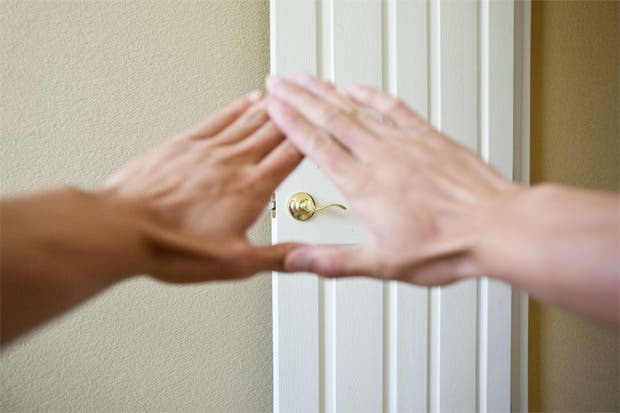Not many people know it, but just like you have a hand dominance, you also have an eye dominance. What does this mean? Well, simply put, one of your eye is dominant against the other, and there’s an easy way to figure out which.
How to figure which eye is dominant
About 2/3 people are right eye dominant, and about 1/3 are left eye dominant, with only a small minority of all people having no eye dominance; eye dominance can also be affected by distance to the object, and you can have stronger or weaker eye dominance, but for all practical purposes, you have one dominant eye, and here’s how you figure out which (there are several methods, this is just the simplest one).
- Hold your palms next to the other and make a triangle-ish hole between them, as seen below. The hole can be round or any shape, it doesn’t really matter.
- Through this hole, look at something that’s at least 3 meters (10 feet). Again, it doesn’t matter what, just some household object or whatever.
- Close your left eye, look through the hole using just your right eye. Then do the same thing, closing your right eye.
- You should be seeing the change immediately: when you’re using one eye, the object will still be there, with the other one, it will be out. Whichever eye is still open when you see the object, that’s your dominant eye. You can repeat the test for several objects and several distances, it should come out exactly the same.
It’s as simple as that? Yep, it’s as simple as that!
The above method is the so-called Miles test, and there are also other ways of figuring out which eye is dominant, but I feel they’re a bit redundant. The Dolman method for example does the same thing, but you use a card with a hole in it, and the Porta method uses an extended arm and a distant object. The thumb is aligned with the object, and again, you close your eyes one by one and see which one is the dominant one.
Why does this matter?
I know what you’re thinking – I’ve lived my whole life without knowing which eye is dominant, why does this even matter? Well, there’s a good chance it won’t matter for you, but it does have its importance
- In normal vision, there is an effect of parallax. You have two eyes, so there is a displacement or difference in the apparent position of an object viewed along two different lines of sight – from both your eyes. When this happens, your brain gives priority to your eye dominant eye. This is especially important if you are practicing archery, darts or shooting guns. Yep, if you’ve been shooting a bow and thought you should use your dominant hand – you’re wrong! You should be using your dominant eye, not your dominant hand. This is, if you are right handed but left eye dominant, you should be shooting with your left hand.
- Ocular dominance is an important consideration in predicting patient satisfaction with a number of eye surgeries, including cataract surgery, refractive surgery, laser eye surgery, and even contact lens wear.
- It has been theoretized at one point that having cross dominance (left hand and right eye or the other way around) is advantageous in sports like baseball or basketball, but that theory seems to have lost ground, as several studies have disproven that.
Interestingly enough, you can change, or rather train your other eye to be dominant. The easiest way you can do that is put a patch on your dominant eye; it doesn’t have to block out your eye entirely, just to force your other eye to take the dominant position.










